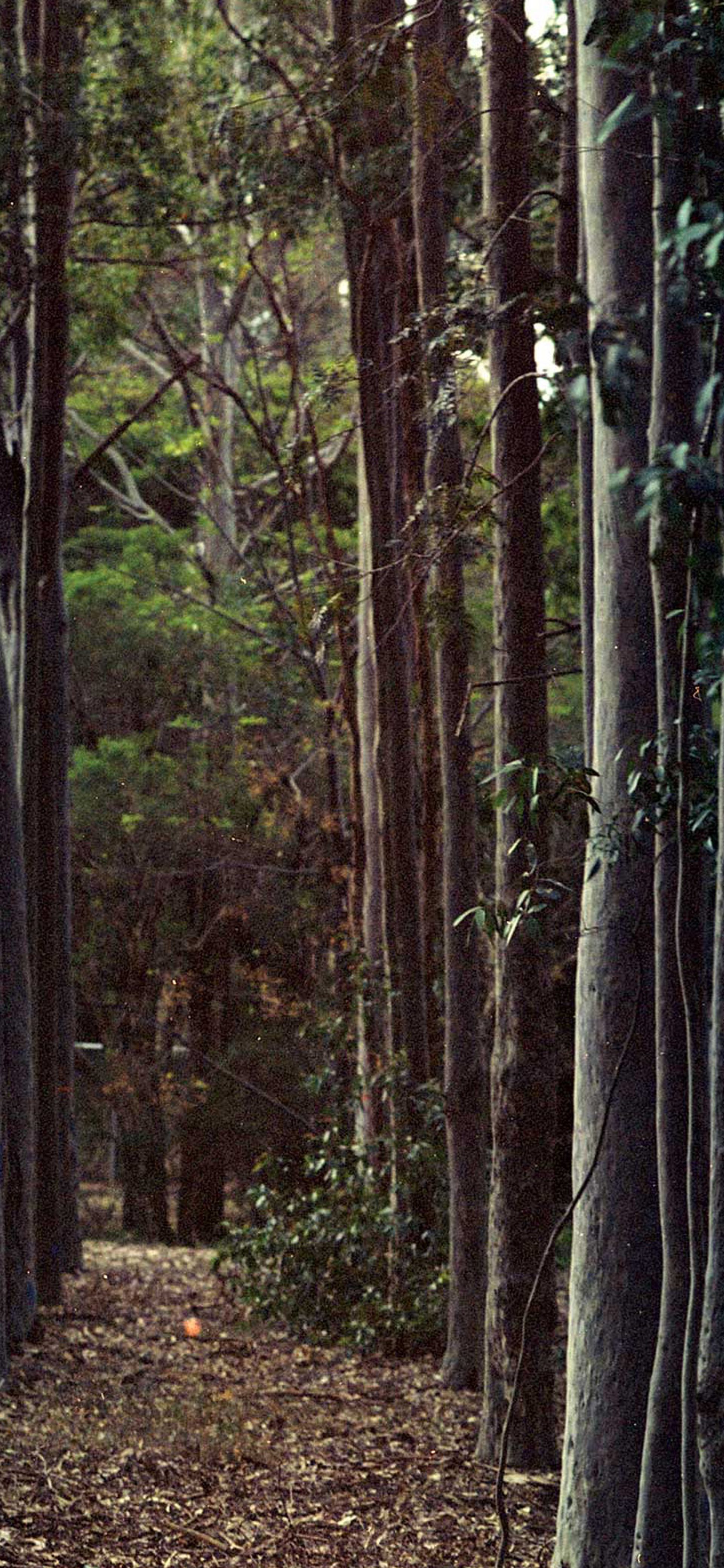Climate Action Plan – Year one

Powerhouse launched its Climate Action Plan 2022–25 in November 2022, clearly setting out 12 key objectives encompassing infrastructure, programs and operations across the museum’s four sites, with the aim of achieving net zero operational carbon emissions by 2025.
The initiatives highlighted below are key projects demonstrating our progress towards some of the objectives and targets set out in the plan. Powerhouse will report progress across our objectives during the three-year plan period and publish a final report on achievements at the end of 2025.

Powerhouse Infrastructure
Innovation, function and critical analysis of energy production and consumption have been ongoing themes throughout the history of Powerhouse, from our priceless Boulton and Watt Steam Engine through to the adaptive reuse of the Ultimo Power Station for Powerhouse Museum in the 1980s. Renewal of our buildings and precincts represent an immediate opportunity for Powerhouse to reduce carbon emissions. With innovative architectural design and engineering, Powerhouse Parramatta will be a 6 Star Green Star building. The renewal of Powerhouse Ultimo will adopt a sustainable approach to modifications, new built form and further adaptive reuse, while recognising the sites’ original function and purpose.
Objective 1
Practice Responsible Stewardship
The Powerhouse renewal presents an opportunity to enact our Caring for Country Principles including Locality of Place, Vitality of People and Country, and Language. First Nations peoples are the custodians of Country and are bound to respect, care and maintain the health of Country. Powerhouse will consider the impact of its activities and practices to ensure it does not damage Country or hinder First Nations peoples’ custodial obligations, including to future generations.
1.1 Work with First Nations people to develop opportunities, engagement and strategies to embed caring for Country principles that reflect their perspectives and knowledge.

BARAMADAGAL GATHERING
In April 2023, Powerhouse Parramatta supported a coming together of Baramadagal people, the traditional owners of the Parramatta area. Powerhouse recognises the importance of preserving and revitalising First Nations cultures and continues to support self-determined Baramadagal gatherings. The museum aims to contribute to the empowerment and wellbeing of the Baramadagal community it serves and Baramadagal Country on which Powerhouse Parramatta will operate.
This activity reflects the caring for Country principles Locality of Place and Vitality of People and Country.
Objective 2
Decarbonise Powerhouse Precincts
We have developed our Green House Gas Emissions Inventory and modelled net zero pathways to achieve an ambitious target of net zero operations by 2025. In the operational context, net zero refers to the Powerhouse intention to operate efficiently, eliminate fossil fuels usage and generate and purchase renewable energy. The use of carbon offsets will be as minimal as possible. Outstanding carbon emissions will initially be addressed with nature based offset programs while we continue our efforts to reduce and eliminate emissions.
Aligning with the Green Star Climate Positive frameworks (Green Building Council of Australia) Powerhouse will:
2.1 Eliminate fossil fuel use and electrify plant.
2.2 Maximise onsite renewable energy opportunities.
2.3 Reduce upfront embodied emissions through the construction of new buildings and capital works programs for existing sites.

RENEWABLE DIESEL IN CONSTRUCTION
Powerhouse Parramatta is being built using some of the first cranes in Australia to be powered by 100 per cent renewable diesel. Greenhouse gas emissions from crane operations at the site will be reduced by up to 90 per cent (over the life cycle of the fuel) compared to fossil derived diesel produced from crude oil.
The renewable diesel was procured and imported to Australia as part of a cross-industry collaboration between Powerhouse project partners Lendlease, Marr Contracting, Refuelling Solutions and the NSW Government, together with builder Multiplex, as the fuel is not currently manufactured or sold in Australia. This initiative shows the great potential for the use of renewable diesel contributing to the decarbonisation of the construction industry throughout Australia.

GLOBAL COOKSAFE COALITION
Natural gas, a fossil fuel, has long been promoted as a fuel with lower carbon emissions. It is also becoming more widely known that gas use reduces indoor air quality and can have negative health impacts.
Powerhouse recently signed on as a partner of the Global Cooksafe Coalition (GCC), committing to phase out gas use in kitchens for all new developments by 2030 and to retrofit existing properties to all-electric kitchens by 2040. GCC is an alliance of member organisations in OECD nations calling for universal access to safe and sustainable cooking, which has earned support from local food leaders Palisa Anderson, Melissa Leong and Neil Perry.
The Vitocco Family Kitchen, launching at Powerhouse Parramatta in 2025, will be a gas-free 200-seat demonstration kitchen designed to engage audiences and showcase the health and sustainability benefits of fossil fuel-free cooking.
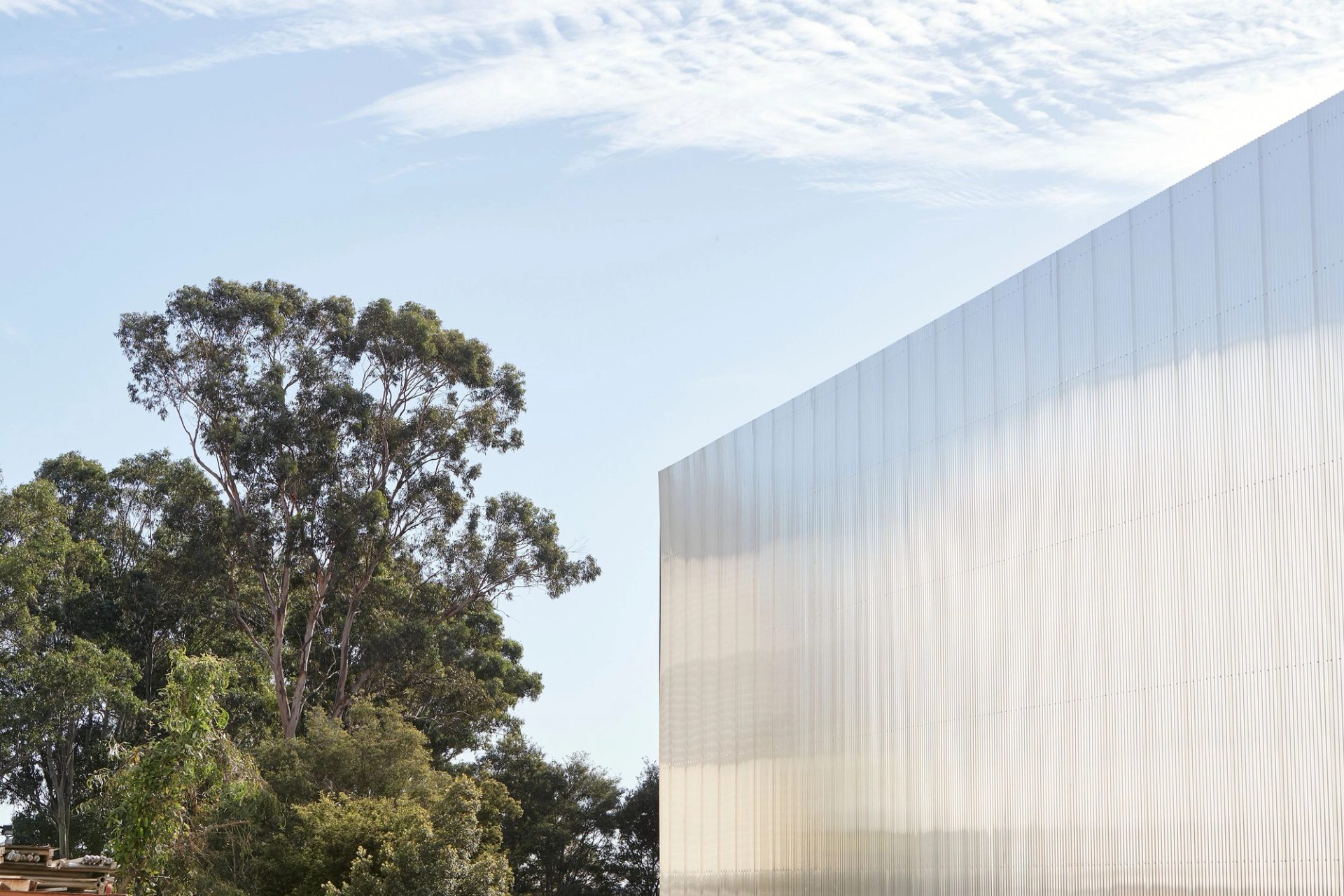
RENEWABLE ENERGY ECOSYSTEM
In 2023 Powerhouse procured a solar photovoltaic and battery energy storage system for the existing Powerhouse Castle Hill buildings. When the system is installed in 2024 it will generate sufficient electricity to produce more than half the energy needed onsite, including powering vehicle charging stations to support the electrified logistics fleet and passenger vehicles.
The delivery of this project fulfils most of the onsite renewable energy generation commitment towards the Powerhouse net zero operations pathway.
Objective 3
Standardise zero waste approach to exhibition construction and museum operations
The manufacture, use and disposal of materials have associated carbon emissions and material waste, particularly if materials are sent to landfill. Reducing material disposal to landfill minimises emissions and increases the realised value of a material.
Exhibition production, install and dismantle is responsible for most of the waste materials generated by Powerhouse. As part of our Net Zero commitment, we will take a longer-term view of the waste hierarchy and move towards a circular approach to exhibition design, construction and related processes.
3.3 Integrate circular principles into exhibition design and production processes.

DECONSTRUCTION OF CADEAU
Cadeau was a moveable, modular installation commissioned by Powerhouse in 2022. The brief required the designers to consider circularity and reuse from the beginning of the design process. It was designed by Newcastle-based studio Curious Practice, founded by University of Newcastle graduates Warren Haasnoot and Greg Lee, and co-built by Arup and Australian Sustainable Hardwoods (ASH).
The de-installation of Cadeau in March 2023 demonstrated circular principles of respect for materials and their re-use, which are essential to shifting Powerhouse exhibition design and production processes.
After the exhibition was dismantled, the timber elements were donated to out(fit), a not-for-profit organisation focussed on community projects within the Newcastle and Hunter Region.
Founded by eight women, out(fit) is affiliated with the University of Newcastle and was formed to raise the profile of women working in the built environment, with volunteers mainly drawn from the architecture and design professions. The timber from Cadeau was reused to create items of furniture for community organisations in Newcastle during Women’s week Building for Dignity workshops hosted by out(fit).

Powerhouse Programs
As we deliver our renewal program, it is timely to reflect upon and learn from our history, and redefine our role in contemporary society. It is insufficient for cultural institutions to simply stage exhibitions and programs that highlight contemporary social issues. They must demonstrate leadership by interrogating their own processes and practices and make intrinsic changes. Powerhouse exhibitions and programs account for the second highest proportion of carbon emissions, behind electricity use.
Objective 5
Embed sustainability in museum practice collection management
Collection management requires precise environmental conditional and conservation. Powerhouse commits to embedding culturally sustainable collection management and conservation practices in line with industry best practice and the Caring for Country Principles of Knowledge, Respect and Stewardship.
Maintaining stable environmental conditions to preserve items and eliminate environmental degradation of objects is energy intensive. Powerhouse will investigate and partner with industry to identify opportunities to improve efficiencies in preserving objects to help achieve energy reduction targets.
5.1 Powerhouse commits to facilitating and promoting culturally sustainable practices within conservation and collection management.

DEED OF DEPOSIT
Two shirts worn by Eddie Koiki Mabo will be cared for by Powerhouse, with full ownership retained by the family and community. This marks a significant shift in museum practice, ensuring First Nations people lead the ways in which culturally significant objects are cared for and managed.
Objective 6
Prioritise collaboration and research with climate science thought leaders and industry
We have a responsibility to leverage our platform to demonstrate leadership on embedding sustainability and responding to climate change. Powerhouse will embed sustainability and climate change experts within the Powerhouse Visiting Research and Residency programs; and produce innovative sustainability related programs, research projects and exhibitions ensuring relevance and responsiveness to global climate science issues.
6.3 Produce innovative sustainability related programs, research projects and exhibitions ensuring relevance and responsiveness to global climate science issues.

100 CLIMATE CONVERSATIONS
The flagship sustainability program 100 Climate Conversations was delivered at Powerhouse Ultimo throughout 2022–23. This program records weekly conversations featuring visionary Australians taking action to address climate change and then makes those insights widely accessible via a dedicated exhibition, website and podcast. All 100 conversations have now been recorded with podcasts to be released till January 2024. The recordings will be held in the Powerhouse digital archives. The podcast has been downloaded more than 130,000 times.
In 2023 Powerhouse received three prestigious Museum and Galleries National Awards: Climate Action Plan 2022–2025 and Caring for Country Principles, in the Sustainability Project category; 100 Climate Conversations, in the Interpretation, Learning and Audience Engagement category; and Powerhouse Late in the Community Engagement and Outreach category. Powerhouse was among 16 organisations nominated across six award categories which highlight the high standard of creative and innovative projects in the Australian cultural sector.
‘It is an honour for Powerhouse to be recognised with these prestigious awards. The Powerhouse team continue to work at the forefront of national and international museum practice and I am proud to work alongside them,’ said Powerhouse chief executive Lisa Havilah.
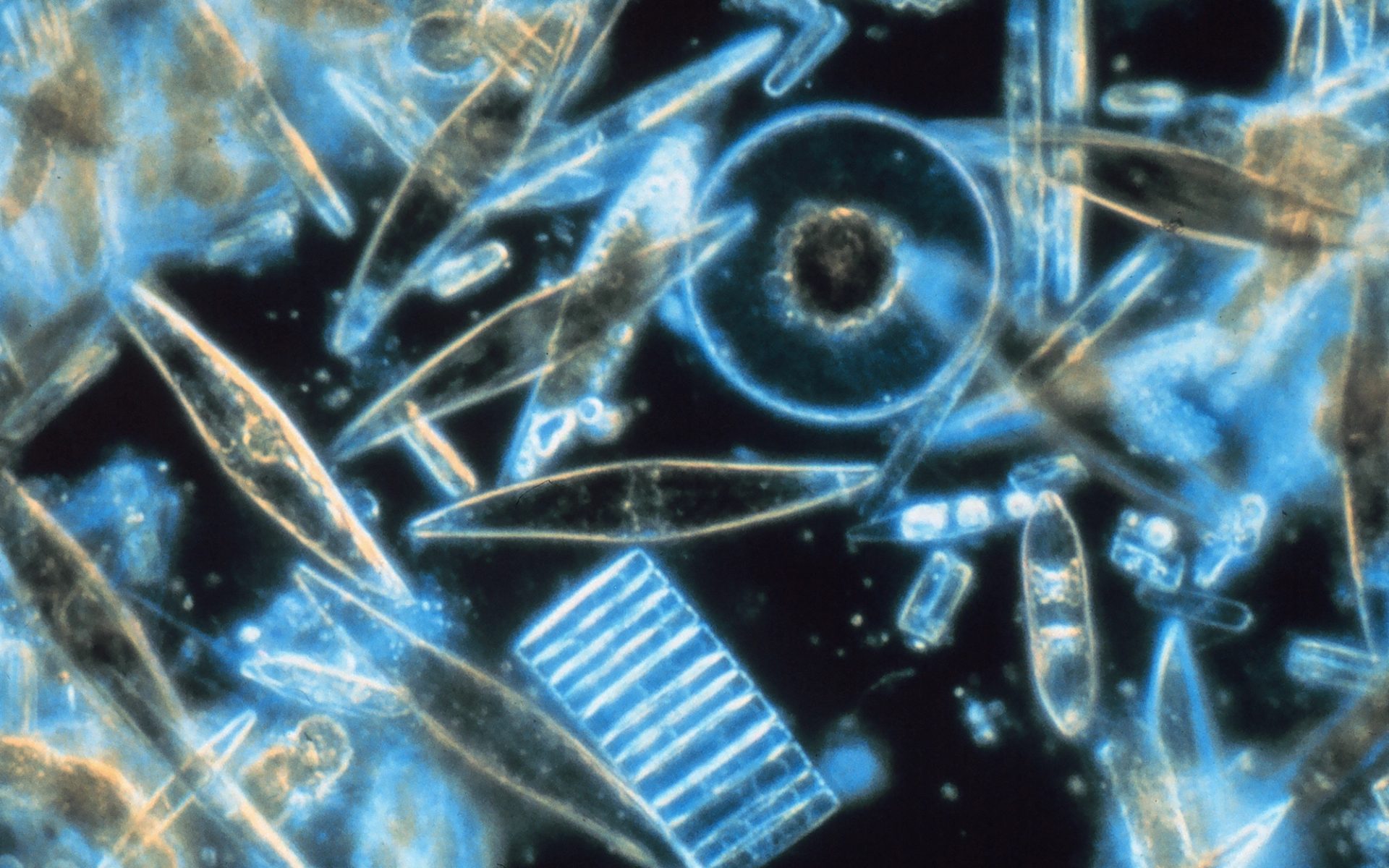
SYDNEY SCIENCE FESTIVAL 2023
Sydney Science Festival was an exciting and accessible program of science events presented by Powerhouse Museum in August. Aiming to inspire curiosity about what science is capable of – and criticism too – in a series of interactive performances, talks and exhibits across the city.
This year’s festival theme – Trace – explored the many marks we leave on our environment and how scientists strive to understand the sources and effects of different phenomena. The theme is responsive to key Powerhouse exhibitions: Atmospheric Memory; A Line A Web A World; and 100 Climate Conversations, which highlight advances in our understanding of human activity and climate change.

ATMOSPHERIC MEMORY
Inspired by computing pioneer Charles Babbage’s proposal that the air is a ‘vast library’ storing every word ever spoken, Rafael Lozano-Hemmer’s breathtaking immersive art environment invited audiences to a multisensory experience at the intersection of art and science. Visitors could control 18 interactive artworks and surround themselves with light, sound and colossal projections as they walked through the chambers of Atmospheric Memory.
‘I hope the project makes the atmosphere tangible so it’s no longer seen as something neutral or invisible we take for granted. It is something complex, beautiful and irreversible,’ said Rafael Lozano-Hemmer. 'The Atmospheric Memory project calls for action against the catastrophic collapse of the atmospheric conditions for planetary survival; against the concentration of all the power of the digital atmosphere into very few hands; and against the weaponisation of the sky.'

RESEARCH PROJECTS
Professor Gay Hawkins is a Western Sydney University Scholar in Residenceand professor at Western Sydney University’s Institute for Culture and Society.
She is an internationally recognised scholar in the cultural, material and political history of plastics and author of The Ethics of Waste: How We Relate to Rubbish, published in 2005. A key focus of her residency is on multidisciplinary explorations of plastics, including raw materials and finished products in the museum’s comprehensive plastics collection, which dates to the early 1930s.
In September 1934, the Technical College and the museum collaborated to develop what was advocated as the first plastics industry exhibition in Australia, described by The Sunday Telegraph as ‘the best display of plastics and fibres in the world … show[ing] the complete history of plastics from first experiments to the latest developments’.
Dr Jason Reynolds is a WSU Scholar-in-Residence at Powerhouse and senior lecturer at Western Sydney University’s School of Science. His research investigates the changing perception of minerals in Australia, including how the social licence for mining and the legacy of extraction conflicts with environmental stewardship, and yet also provides for technological progress.
Powerhouse has an extensive collection of mineral specimens that tell a story of what Australians have valued and considered important to the country’s history. The collection includes rare geologic specimens sourced in Antarctica and lead-zinc-silver ore from Broken Hill.

TALANOA
This program focused on collaborative and artistic responses to climate justice from Pacific and island nations academic and artist communities.
In October 2023 Powerhouse proudly hosted Talanoa Forum: Moana Rising, a free community event supported by the University of Melbourne, Creative New Zealand and the University of Sydney. First presented at the 59th Venice Biennale, the Talanoa Forum extended the themes of Yuki Kihara’s Paradise Camp exhibition by bringing together 26 artists, curators, scholars, activists and policymakers from Australia, Aoteroa New Zealand, Sāmoa, Tahiti and Italy.
Over three days from 10–12 October, this interdisciplinary program highlighted urgent issues around small island ecologies, climate justice, decolonial museology and diasporic and Pacific alliances.

SYDNEY DESIGN WEEK 2023 – AMODERN
The program for Sydney Design Week 2023 explored multiple broad themes related to sustainability and climate change, from many varied industry perspectives.
Titled Amodern, in response to an essay by French philosopher Bruno Latour (1947–2022), the program enlisted six fields of enquiry: Eco Systems, Material Cultures, Communal Cities, Micro Cycles, Connected Threads and Photofields, to explore the complex and interconnected social and natural ecologies in which contemporary design operates.
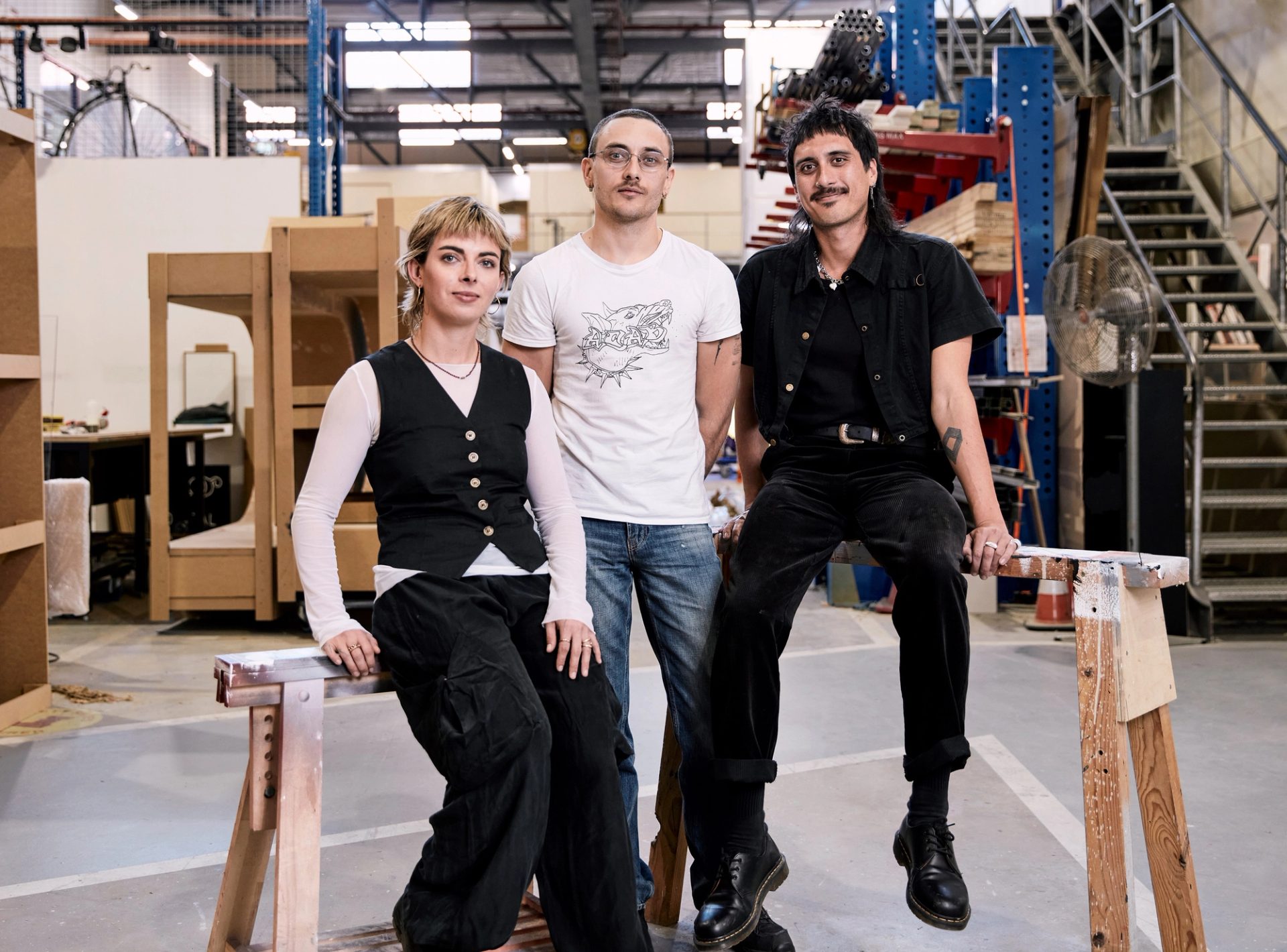
Powerhouse Operations
To ensure accountability, track against our targets and improve ways of working, Powerhouse commits to reviewing and redefining policies and procedures and developing the capabilities of our workforce to achieve our net zero commitments. We will focus on performance measures and continuous improvements to embed the actions of the Climate Action Plan into operations.
Objective 11
Participate in Industry leading collaborations
Since its inception Powerhouse has been intrinsically connected to industry. We will be active in seeking synergies between the research and work of industry, to partner and drive innovation through our program and functions.
11.3 Develop strategic partnerships that demonstrate industry leadership in cultural programs that embed sustainability and responses to climate.
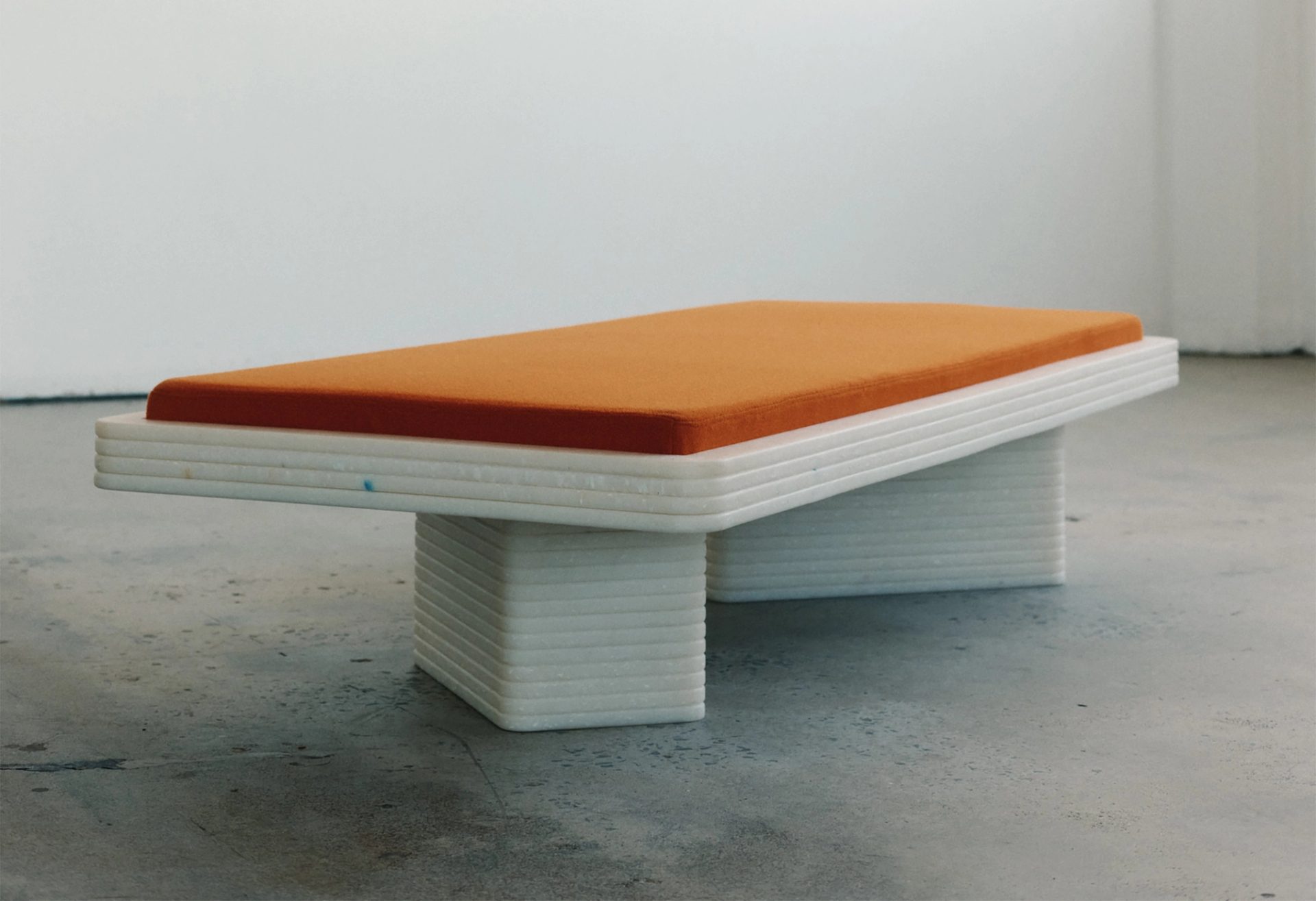
NIELSEN DESIGN ACCELERATOR
The annual Carl Nielsen Design Accelerator, supported by a generous bequest from Carl and Judy Nielsen, recognises achievement by Australian industrial designers working in sustainable design.
Ash Fischer and Orlando Hayes are the recipients of the 2023 Carl Nielsen Design Accelerator program for their Camada Daybed project. This design collaboration celebrates aesthetics and sustainability and shows how design can change people’s understanding of what waste is capable of becoming. The entire frame of the daybed is made from 100% recycled plastic, with Australian foam upholstered in Australian wool. The design has considered sustainability across the materials, manufacturing and lifecycle of the product.

SYDNEY SUSTAINABLE DESTINATION PARTNERSHIP
Powerhouse collaborates with organisations throughout the tourism sector as a member of the Sustainable Destinations Partnership, which supports Sydney-based cultural, entertainment and accommodation organisations to help make Sydney a more sustainable destination. The Partnership aims to reduce the environmental impact of the sector, invest in renewable energy and other sustainable solutions, and engage with regulators on major environmental policy and regulatory issues. The sector is responsible for creating 47% of Sydney’s commercial waste, 21% of its carbon emissions and consuming 14% of its drinking water.
Powerhouse infrastructure objectives align with the SDP priorities to improve performance across these environmental impact areas.

Operational environmental targets
All operational environmental targets within the Climate Action Plan are to be achieved by 2025, set against the baseline year of 2018–19. Below is a summary of the progress towards these targets for FY 2022–23.

Achieve net zero building operations
19% reduction in carbon emissions from building operations, largely reflective of the electricity reduction.

Reduce electricity consumption by 20%
5% reduction in electricity consumption for building operations. Reduced electricity use continued to be a high priority as consumption contributes to approximately 90% of the carbon footprint for Powerhouse buildings. A building performance and monitoring program was introduced in June 2022 to analyse and improve the energy efficiency at Castle Hill. Air handling units have also been upgraded at Castle Hill further contributing to the electricity reduction.

Achieve 90% resource recovery from production and operational waste
Overall waste generation has reduced from 212 tonnes in 2018–19 to 109 tonnes in 2022–2023 with 33% of materials diverted from landfill. In 2023, Powerhouse began the first phase towards achieving this target by establishing a program supported by a waste and recycling reporting platform to ensure a consistent and higher standard of data retrieval from the museum’s multiple service waste collection service providers.

Achieve zero increase in potable water use
Annual potable water use has decreased from 22.2 megalitres in 2018–19 to 12.8 megalitres in 2022–23. Water use metering introduced to Powerhouse Ultimo has contributed to some reduction through closer monitoring and leak rectification. Sydney Observatory has only been operational from February 2023, contributing additional reductions for this financial year.
More
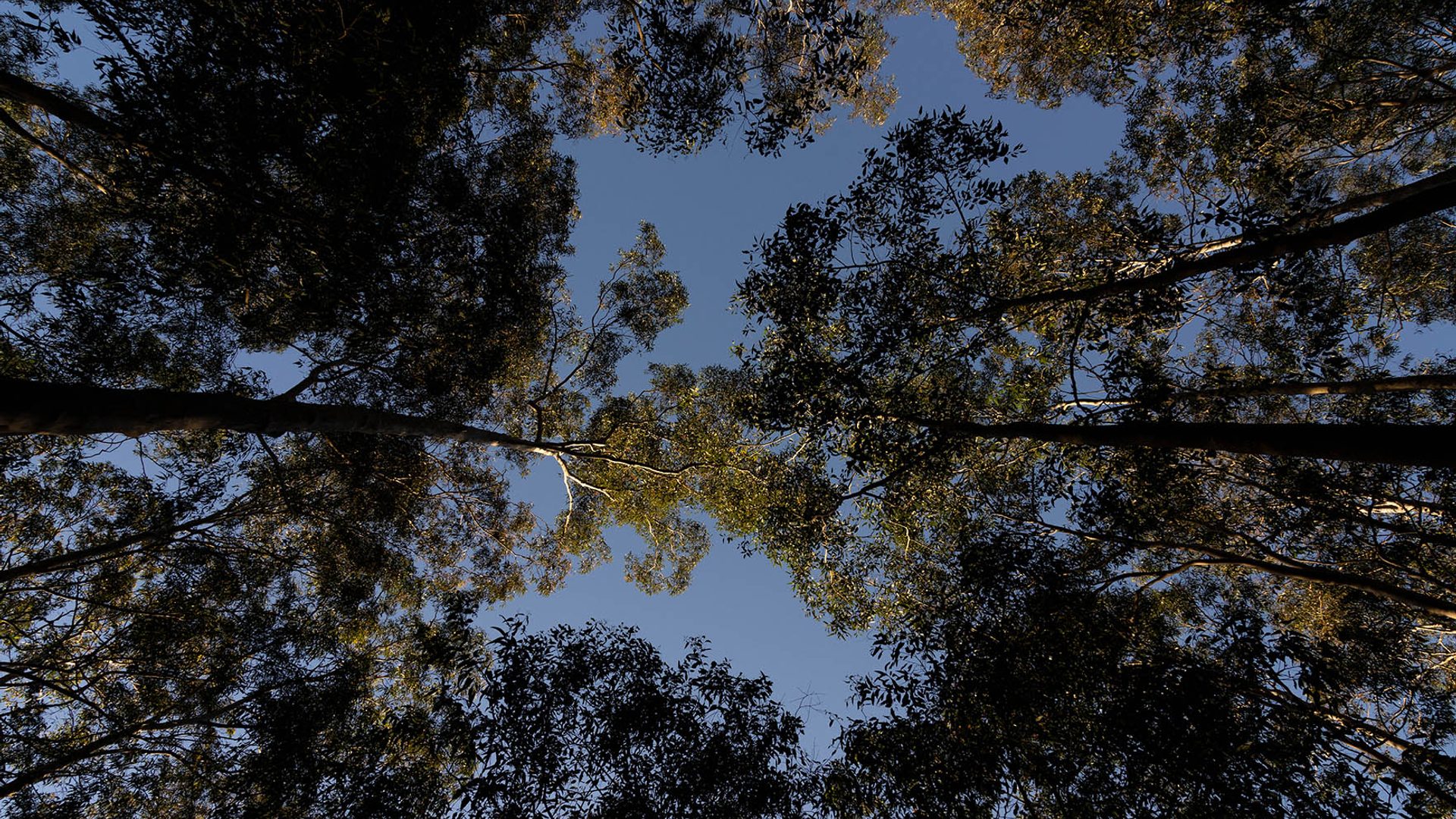
Powerhouse Climate Action Plan
As climate change continues to impact our communities, Caring for Country and First Nations’ cultural knowledge have become central to the delivery of practical solutions.

100 Climate Conversations Special
Conversation on the Powerhouse Action Plan with Lisa Havilah, Terri Janke, Emily McDaniel, Carmel Reyes and Rae Johnston.










